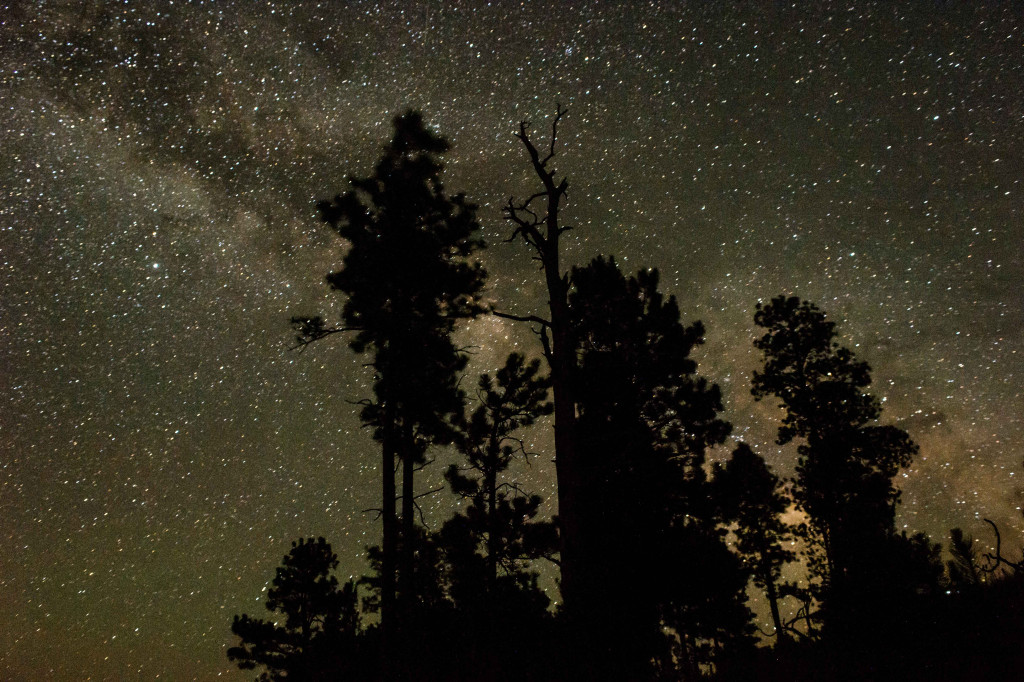Winter offers favorable conditions for viewing stars.
Enlarge

Photo by Justin Haag, Nebraskaland Magazine
By Alie Mayes, Community Science Specialist
As winter envelopes Nebraska, it is a welcome escape to dream of the color orange. A brightly streaked sunset. Sunburst lichen on full display. Bright American bittersweet pods. Campfires burning into the night. The color orange is a beacon of warmth and light — a promise of warm days ahead. But instead of focusing on the future, let’s appreciate the present.
Three years ago, at a cold campground in the middle of winter, my partner and I had not been together long. We had bonded over nature, dark skies and country drives, and that was how we found ourselves camping and bundled head to toe, staring up at the stars.
We took turns naming the constellations that we knew. Cassiopeia, the vain queen destined to spend half the year clinging to her throne. Orion, forever searching the skies. The bull, Taurus, standing proud.
Then, while continuing to scan the dark sky, my eyes focused on a star that was glowing orange-red. It was the first time I remember seeing a colored star. I excitedly asked my partner to confirm what I was seeing, and since that time, we have taught ourselves more about the stars of the night sky.
Winter is an especially good time to get into star viewing. The cooler temperatures bring lower humidity and a more stable atmosphere. So, keep an eye out for these orange stars this winter — and remember to bundle up!
Betelgeuse
As seen from Earth, Betelgeuse forms the left shoulder of the familiar constellation of Orion. Betelgeuse is a red giant with a distinctive orange hue. According to NASA, this star is one of the largest ever cataloged and one of the largest visible to the naked eye.

Arcturus
If you follow the handle of the Big Dipper to the constellation Boötes, you will land on the star of Arcturus. This orange hued giant is more than 7.5 billion years old, compared to the relatively “young” Betelgeuse, which is around 10 million years old. It is the brightest star in its constellation and the fourth brightest star in the night sky. It is approximately 170 times more luminous than the sun.
Aldebaran
The eye of the bull, Aldebaran, is found in the constellation Taurus. This constellation is especially prominent in the winter months. Aldebaran is about 44 times larger than the sun. Its name comes from al Dabaran, Arabic for “the follower,” as it seems to follow the star cluster “Pleiades” through the night sky.
The stars continue to be a source of fascination and storytelling throughout human history, and different cultures around the world have unique interpretations for the celestial landscape that we share. This winter, look to the heavens to find a bit of color.
This article is part of the Nebraska Nature in Color series. This limited series will run monthly from December 2023- June 2024.
The post Nebraska Nature in Color – Orange in the Night Sky appeared first on Nebraskaland Magazine.
















